Related Research Articles

The Easybeats were an Australian rock band who formed in Sydney in late 1964. They are best known for their 1966 hit single "Friday on My Mind", which is regarded as the first Australian rock song to achieve international success; Rolling Stone described it as "the first international victory for Oz rock". One of the most popular and successful bands in the country, they were one of the few Australian bands of their time to foreground their original material; their first album Easy (1965) was one of the earliest Australian rock albums featuring all original songs.

John Inglis Young, OAM, known professionally as John Paul Young, is an Australian pop singer who had his 1978 worldwide hit with "Love Is in the Air". His career was boosted by regular appearances as a performer and guest host on Countdown, a 1974–1987 TV series for Australia's national broadcaster ABC. Besides "Love Is in the Air", Young had top ten chart success in Germany and the Netherlands with "Standing in the Rain" and four other top ten hits in South Africa, including No. 1 hits with "I Hate the Music" in 1976 and "Yesterday's Hero" in 1975.

Johannes Hendrikus Jacob van den Berg, better known as his stage name Harry Vanda, is an Australian musician, songwriter and record producer. He is best known as lead guitarist of the 1960s Australian rock band the Easybeats who with fellow member George Young formed the 1970s and 1980s songwriting and record production duo Vanda & Young.
The Wrights were a one-off Australian rock supergroup consisting of Nic Cester, Bernard Fanning, Phil Jamieson, Kram, Chris Cheney, Davey Lane, and Pat Bourke. They are named after former Easybeats frontman Stevie Wright, the original performer of the song-trilogy "Evie", which was the group's feature song.

George Redburn Young was an Australian musician, songwriter and record producer. He was a founding member of the bands The Easybeats and Flash and the Pan, and was one-half of the songwriting and production duo Vanda & Young with his long-time musical collaborator Harry Vanda, with whom he co-wrote the international hits "Friday on My Mind" and "Love Is in the Air", the latter recorded by John Paul Young.
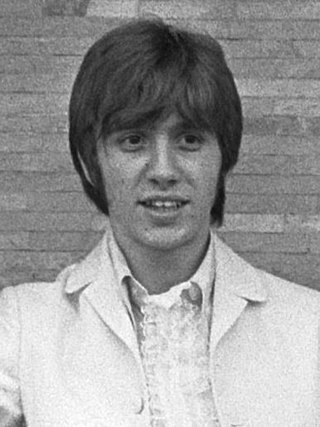
Stephen Carlton Wright was an Australian singer, songwriter, and musician. Called Australia's first international pop star, he is best known for being the lead singer of the Easybeats, who are widely regarded as the greatest Australian pop band of the 1960s.
Flash and the Pan were an Australian new wave musical group formed in 1976 by Harry Vanda and George Young, both former members of the Easybeats, who formed a production and songwriting team known as Vanda & Young. The group's first chart success was their 1976 debut single, "Hey, St. Peter", which reached number five in the Australian Kent Music Report Singles Chart. The next single, "Down Among the Dead Men", peaked at number four in Australia in 1978. For international release, it was re-titled "And the Band Played On".

"Friday on My Mind" is a 1966 song by Australian rock group the Easybeats. Written by band members George Young and Harry Vanda, the track became a worldwide hit, reaching No.16 on the Billboard Hot 100 chart in May 1967 in the US, No.1 on the Dutch Top 40 chart, No.1 in Australia and No.6 in the UK, as well as charting in several other countries. In 2001, it was voted "Best Australian Song" of all time by the Australasian Performing Right Association (APRA) as determined by a panel of 100 music industry personalities. In 2007, "Friday on My Mind" was added to the National Film and Sound Archive's Sounds of Australia registry.
Albert Productions, a division of music publishing and recording company Albert Music, is one of Australia's longest established independent record labels to specialise in rock and roll music. The label was founded in 1963 by Ted Albert, whose family owned and operated the Sydney music publishing house J. Albert & Son.

It's 2 Easy is the second studio album by Australian rock band the Easybeats. Released on 24 March 1966, the album featured four hit singles; "Wedding Ring", "Sad and Lonely and Blue", "Women " and "Come And See Her".

Volume 3 is a studio album by the Australian rock band The Easybeats, released on 3 November 1966. It was the third and final album from the group recorded in Australia before relocating to England.
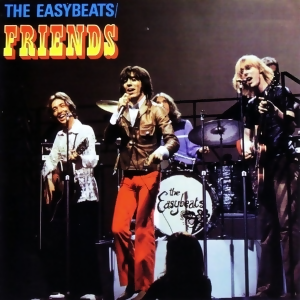
Friends is the sixth and final studio album by Australian rock band the Easybeats. It was released in early 1970 as part of the group's new recording contract with Polydor Records. It would be the only album Polydor released of the band as they broke up before its release.

Vanda & Young were an Australian songwriting and producing duo composed of Harry Vanda and George Young. They performed as members of 1960s Australian rock group the Easybeats where Vanda was their lead guitarist and backing singer and Young was their rhythm guitarist and backing singer. Vanda & Young co-wrote most of the Easybeats' later hits including their international hit "Friday on My Mind" and they were the record producers for the group from 1967. Young was the older brother of Malcolm and Angus Young of the hard rock band AC/DC and also the record producer behind several of the band's biggest albums.
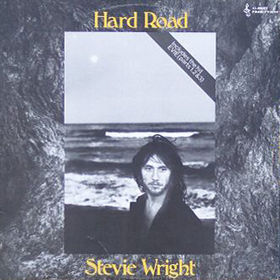
Hard Road is the debut solo album from Australian singer Stevie Wright. The album's first single, "Evie ", was hugely successful and the title track was later covered on Rod Stewart's 1974 album Smiler. The album itself reached #2 on the Australian album charts in 1974 and was the 16th-highest-selling album in Australia that year. The compact disc is currently out-of-print and has become quite rare. A digital edition was available on iTunes as of June, 2014.

"Who'll Be the One" is a song written by Harry Vanda and George Young. It was originally recorded by the Australian rock group the Easybeats in 1967. The song was a follow-up to their successful single "Friday On My Mind". The single was a flop in the U.K., but it reached #12 on the Go-Set charts in Australia

"The Music Goes 'Round My Head" is a 1967 song and single by Australian rock group The Easybeats, which was written by band members George Young and Harry Vanda.
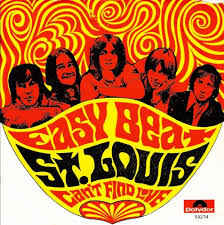
"St. Louis" is a song by Australian rock group the Easybeats, which was released in June 1969. It was co-written by its members Harry Vanda and George Young and recorded as their first single after signing to Polydor Records.

"Come and See Her" is a song written by Stevie Wright and George Young. It was released as the sixth single for their Australian rock group the Easybeats in April 1966, which reached No. 3 on the Australian charts. It was the group's debut single in the United Kingdom, issued on the United Artists Records in July.
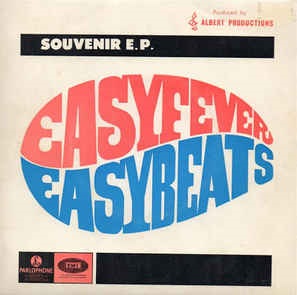
Easyfever by Australian rock and roll group the Easybeats was their fourth official extended play. It was issued to coincide with the band's departure for the United Kingdom. It appeared in August 1966 and reached number one on the Australian singles charts, something that had only been achieved once before by an EP. The songs on the EP did not appear on any of the Easybeats' official studio albums, however, they were included as bonus tracks on the 1992 CD reissue of their It's 2 Easy album.

"Sad and Lonely and Blue" is a song written by Stevie Wright and George Young, recorded by their band the Easybeats in 1965. The song was written in response to the group being labelled as "pop musicians" from their previous singles "She's So Fine" and Wedding Ring" along with their debut album Easy. The song is based around a 12-string guitar riff played by guitarist Harry Vanda and sees influences in both British rhythm and blues and jangle pop. Released as a single on 4 November 1965, it was a chart failure compared to their previous releases, only reaching number 21 on the Kent Music Report.
References
- ↑ Harrington, Jim (2015). "Stevie Wright - "Evie". In Dimery, Robert (ed.). 1001 Songs You Must Hear Before You Die. New York: Universe. p. 340.
- 1 2 Tait, John (2010). Vanda & Young. University of New South Wales Press. p. 144. ISBN 978-1-74223-217-1.
- ↑ Evie [music] / Harry Vanda & George Young. J. Albert & Son. 1974. Retrieved 29 April 2021.
{{cite book}}:|website=ignored (help) - ↑ "MILESAGO - Groups & Solo Artists - Stevie Wright". Milesago.com. Retrieved 3 January 2015.
- ↑ "Here Are The Songs That Made Triple M's 'Ozzest 100'". Musicfeeds. 27 January 2018. Retrieved 4 January 2020.
- 1 2 "Australian Story - So Much To Say - Transcript". Abc.net.au. 18 February 2013. Archived from the original on 13 January 2016. Retrieved 9 October 2016.
- 1 2 3 "Stevie was still a great performer, still a great singer," Young says. "So Harry and I got to work to see if we could come up with something that could put him back in the charts."
- 1 2 3 "It's All About The Song ..."Evie" | News | Alberts". Albertmusic.com. 1 February 2013. Retrieved 9 October 2016.
- ↑ Kent, David (1993). Australian Chart Book 1970–1992 (illustrated ed.). St Ives, N.S.W.: Australian Chart Book. p. 344. ISBN 0-646-11917-6.
- ↑ "National Top 100 Singles for 1974". Kent Music Report. 30 December 1974. Retrieved 11 January 2022– via Imgur.
- ↑ "The ARIA Report: New Releases Singles – Week Commencing 28th February 2005" (PDF). ARIA. 28 February 2005. p. 28. Archived from the original (PDF) on 22 February 2008. Retrieved 20 May 2021.
- ↑ "Australian-charts.com – The Wrights – Evie". ARIA Top 50 Singles . Retrieved 16 April 2021.
- ↑ "ARIA Top 100 Singles for 2005". ARIA . Retrieved 16 April 2021.
- ↑ "The Wrights – Evie". ARIA Top 50 Singles. Retrieved 6 November 2022.
- ↑ Ryan, Gavin (2011). Australia's Music Charts 1988–2010 (PDF ed.). Mt Martha, Victoria, Australia: Moonlight Publishing. p. 306.
- ↑ "ARIA Charts – Accreditations – 2005 Singles" (PDF). Australian Recording Industry Association . Retrieved 6 November 2022.